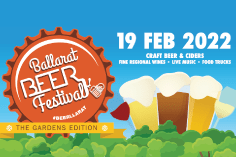(Turlock, CA) – After much anticipation, Dust Bowl Brewing Co. announces the opening of its third taproom located in Elk Grove, California. Marketed as the Old Town Tap House, Dust Bowl Brewing Co. will officially open its doors to eager craft beer fans on Saturday, December 18th at 11:00 AM. The new taproom is nestled […]
The post Dust Bowl Brewing Announces Third Taproom in Elk Grove, CA appeared first on The Full Pint - Craft Beer News.





















